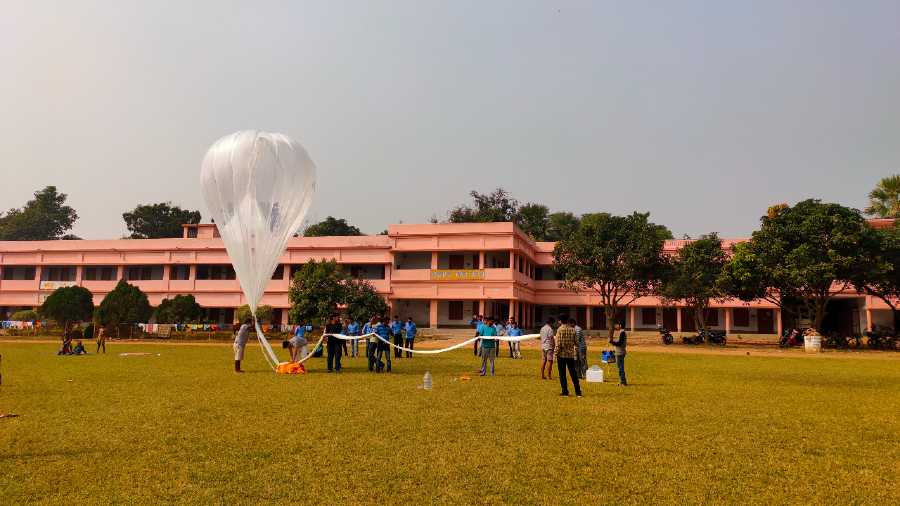Why are people so interested in going to space? Because it is there! But where is it? What is the boundary between Earth and the space beyond? Does it start at 80 kilometres as claimed by Virgin Galactic that crossed this altitude a fortnight ago? Or, does it start at 100-plus kilometres, which American Jeff Bezos crossed last week? Indeed, how do we know we went to space? Where should the milestone be set? The answer depends on what the meaning of “space” is.
Merely saying “it is out there” cannot satisfy anyone. We need a criterion. Unfortunately, every criterion is subjective. After all, are we not already riding a spaceship called Earth that’s speeding at 30 kmps and continuously orbiting the sun?
The Federal Aeronautique Internationale, based in Europe, is satisfied with the following definition of the boundary of space — at 80km from the earth’s surface. The US- based National Aeronautics and Space Administration would have it at no less than 100km. The National Oceanographic and Atmospheric Administration or NOAA, also based in the US, has a more stringent limit set at an altitude of 1,000km.
Thus defining this boundary is not easy, though the implications of this confusion are huge. How does one distinguish between an astronaut and an aeronaut or a spaceport and an airport? What if you purchase a ticket to space but end up going just a kilometre below the purported boundary? Would you get your money back? Clearly, if NOAA had its way, neither the International Space Station nor the Hubble Space Telescope ever went to space!

Sandip Chakrabarti
While billionaires in the West are busy with the space race and fight over definitions of boundaries, I believe that being in “space” is a state of mind. If you sense the lack of oxygen in a hot air balloon, you are already in space.
Suppose you are in an elevator whose cable just broke and both you and the elevator are in free fall. You feel “weightless”, as though the ground is not exerting any pull on you. In fact, many would have experienced this in an elevator or an airplane. While take off, you feel a bit heavier and while landing you feel lighter. In an air pocket, items in the aircraft fly all around. So if you wish to experience the “weightlessness” of space, all you need is an elevator ride from a sufficient height so that you feel a few seconds of weightlessness before the brake is applied and you return to terra firma.
We at the Indian Centre for Space Physics (ICSP) not only believe in democratisation of space, but also that anyone with a basic knowledge of the scientific principles should be able to sense the excitement of sending instruments to space. These instruments could be very simple — such as those used to measure temperature, pressure, radiation, etc. at that height, or to check the effects of radiation on living beings including plants, seeds, viruses and bacteria. Or, they could simply measure the pollutants or ozone content in air. Recently, payloads made by college students from West Bengal returned from space with valuable data.
The ICSP has been carrying out balloon-borne experiments to study radiation, visiting space over 100 times. Each mission costs only about Rs 30,000. The 100-feet balloons now used in these experiments have the capacity to carry about 6kg to “near space” — that is, 40-42km from the earth’s surface.
The best part of our missions is that all the equipment is recoverable, reducing the cost to a bare minimum. Our missions can be scaled up, and with airtight chambers and parachute deployment, people too can reach space and experience weightlessness.
From this altitude, the classic combination of the round arc of the earth’s surface and the pitch-dark sky beyond a thin blue atmosphere does not look any different from what is seen from other space missions. Between the height at which the balloon bursts — about 42km — and deployment of the parachute — 26-28km — there is a gap of 6-7 minutes in which micro-gravity or near-zero gravity experiments can be carried out. It is a matter of time before we are able to send people to experience space at a much lower cost.
Given that space is virtually infinite and we have at most a few thousand years to explore it, it is selfish to have high-end facilities for a chosen few. The ICSP produces low-cost telescopes for skygazing and radio wave receivers for ionospheric research. In future, we can also think of low-cost space travel using high-end balloons capable of carrying 10-20 people to the edge of space. Instead of expensive “strong and bitter” space research for a chosen few, I believe in “mild and sweet” practical space research for all.
The writer is an astrophysicist and director of the Indian Centre for Space Physics, Calcutta










